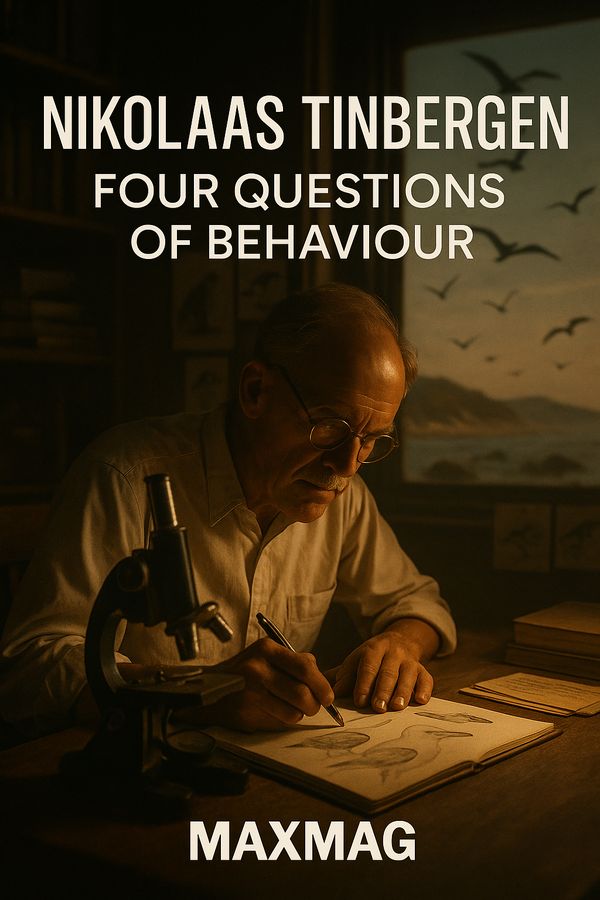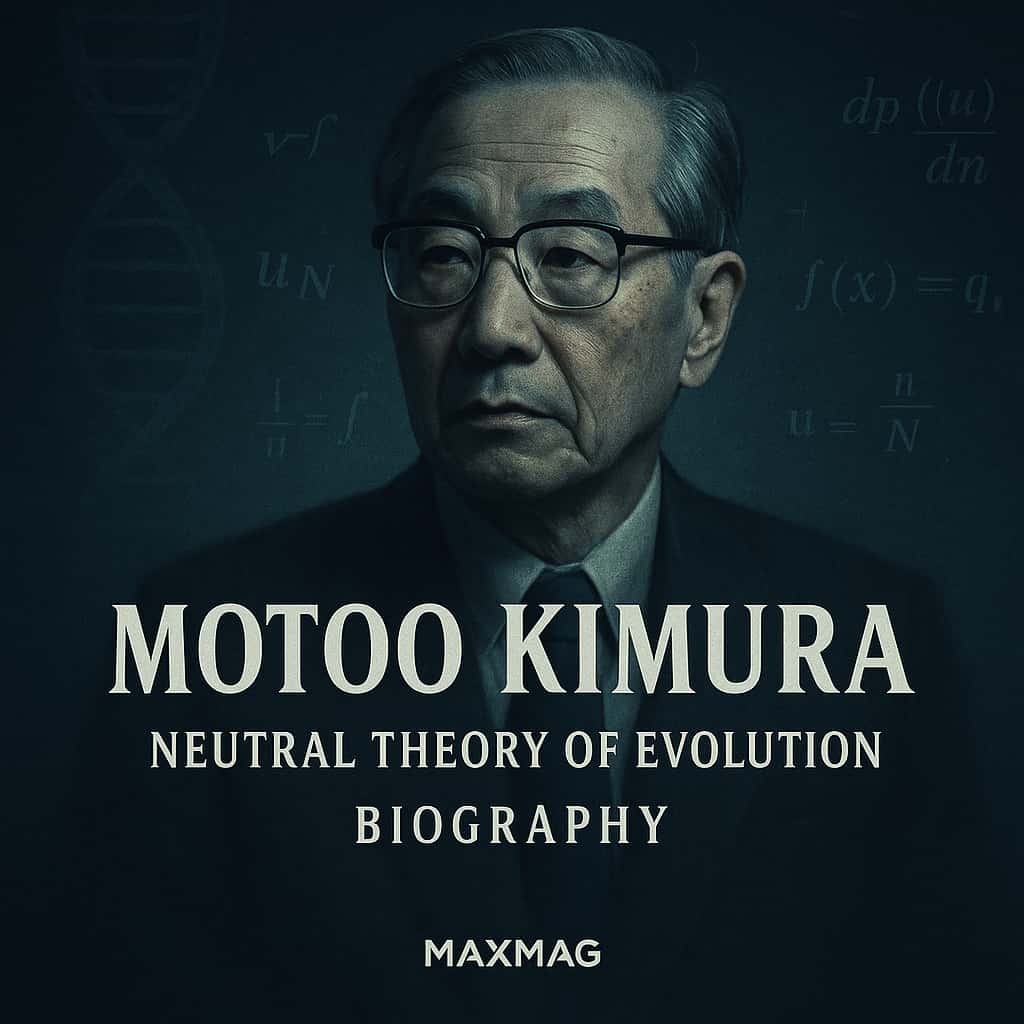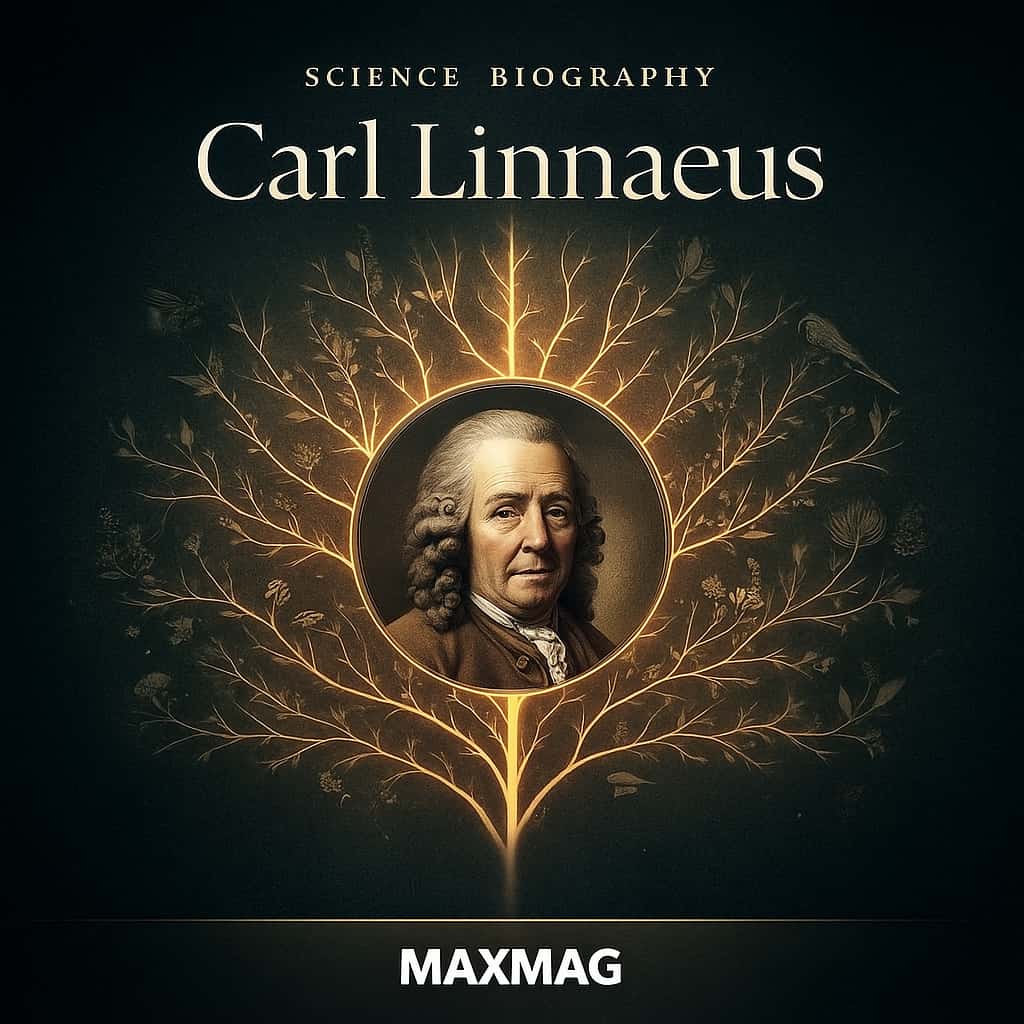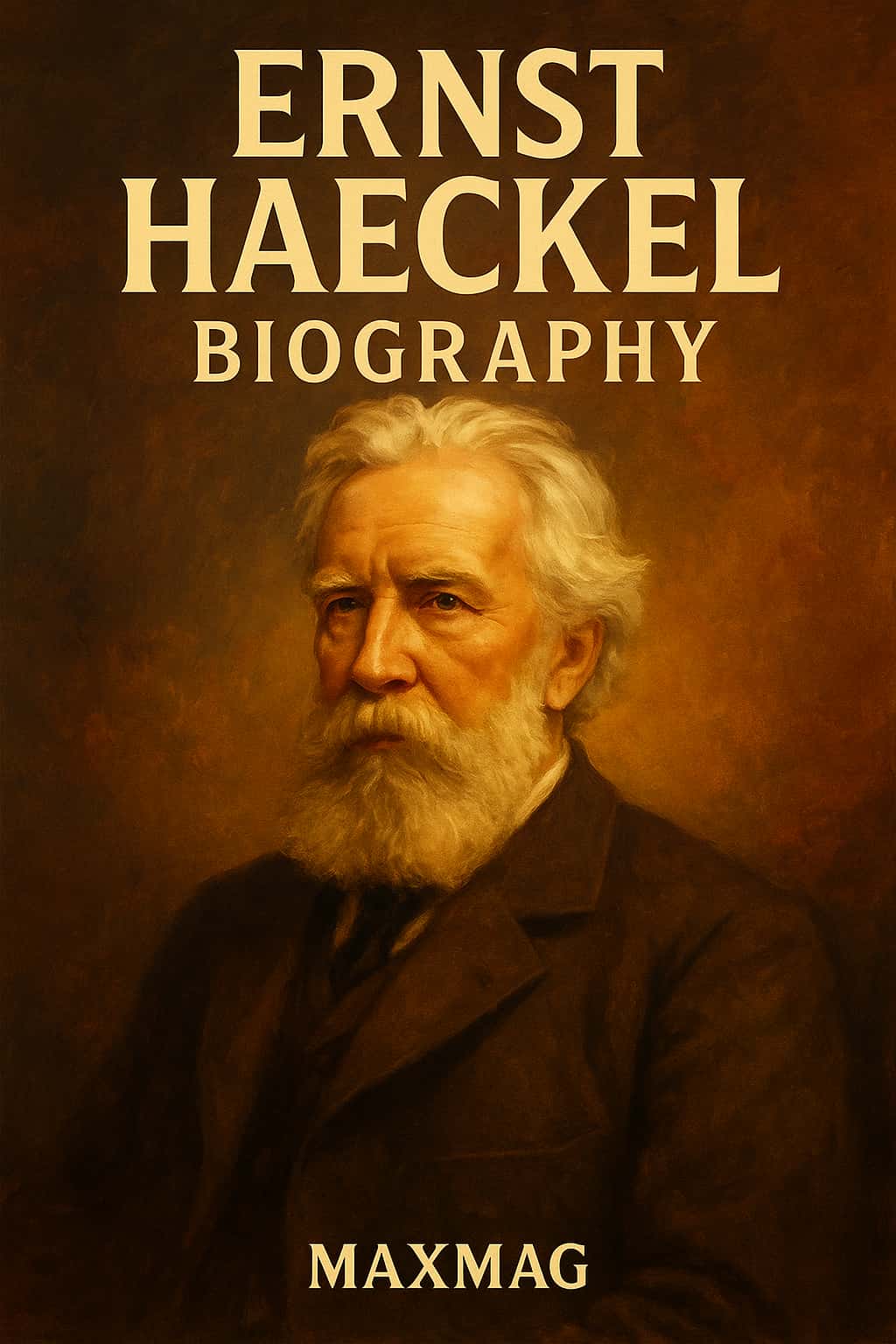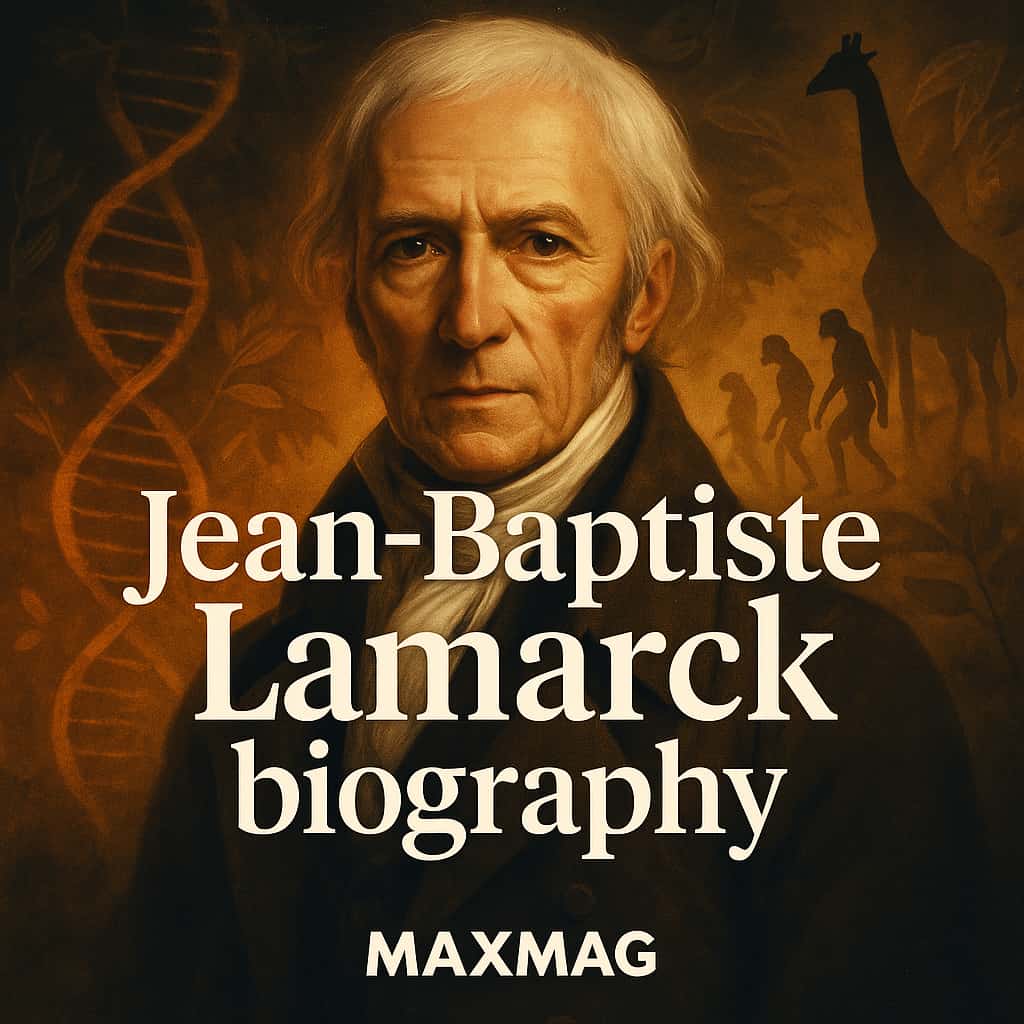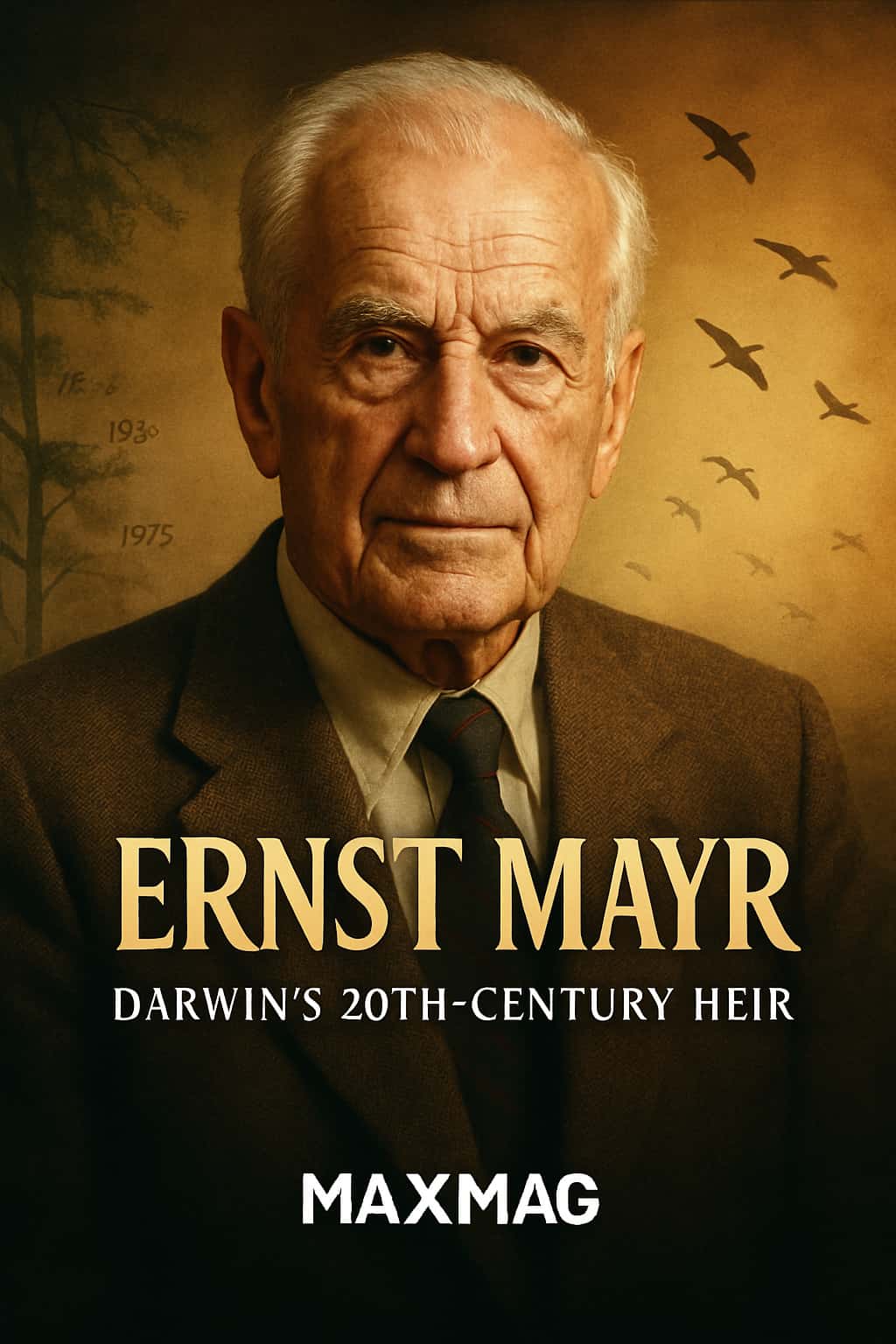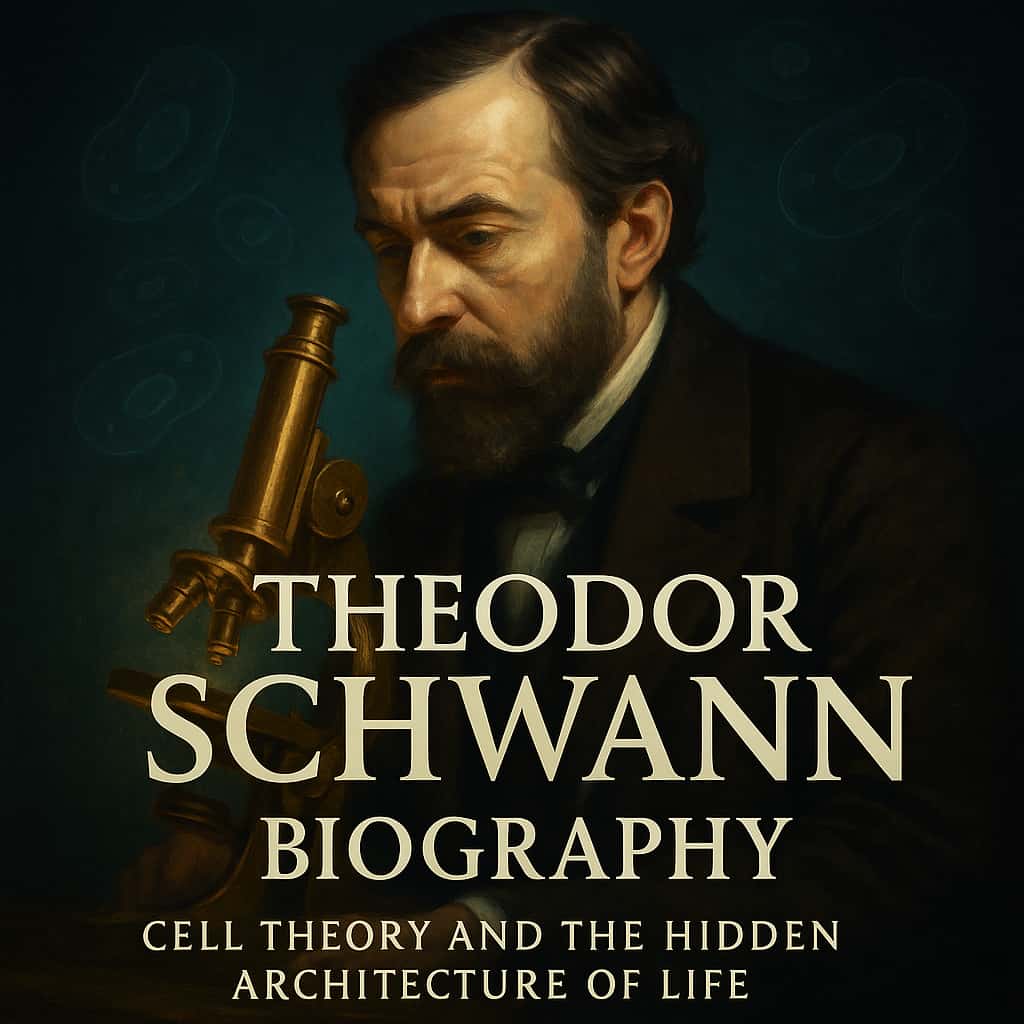
On a patch of soil behind an Augustinian monastery in the city of Brno, a quiet friar knelt among rows of pea plants and began counting. It was not a scene that looked like the birth of a scientific revolution. There were no dramatic lectures to packed halls, no expeditions aboard famous ships. Yet any honest Gregor Mendel biography has to begin in that garden, where a man who never called himself a geneticist uncovered patterns that would eventually reshape biology, medicine and agriculture.
Today, Mendel is the textbook “father of genetics”, the name attached to school diagrams of yellow and green peas. But this familiar image hides a stranger, more human story. The real Gregor Mendel biography is about a farm boy who became a monk to afford an education, a teacher who repeatedly failed his exams, a meticulous experimenter whose greatest work sank without trace during his lifetime, and a scientific pioneer whose ideas would be rediscovered long after his death and woven into the history of genetics.
Gregor Mendel at a glance
- Who: Johann Gregor Mendel (1822–1884), Austrian Augustinian friar, teacher and scientist.
- Field and era: Early genetics in 19th century science, working mainly in Brno, then part of the Austrian Empire.
- Headline contribution: Demonstrated clear mathematical laws of inheritance through pea plant experiments, now known as Mendelian genetics.
- Why he matters today: His laws of inheritance underpin modern genetics, from medical testing to crop breeding and DNA-based research.
Early Life and Education of Gregor Mendel
A childhood among Silesian fields
Any careful Gregor Mendel biography begins far from laboratories and lecture halls, in the rural village of Heinzendorf (today Hynčice in the Czech Republic), where Johann Mendel was born in 1822 to a family of small farmers. The landscape of his childhood was one of orchards, fields and the hard economics of subsistence agriculture. From an early age he saw how a good harvest or a blighted crop could decide whether a family stayed afloat or slipped into debt.
Mendel’s parents recognised his academic talent but could not easily spare him from farm work. Money was tight; schooling was a luxury. His sister Theresia reportedly sacrificed part of her dowry to fund his education, an act that quietly shifts the Gregor Mendel biography away from the lone genius myth and toward a family story shaped by sacrifice and hope.
The decision to enter the monastery
As a young man, Mendel studied in Opava and later at the University of Olmütz, struggling financially and suffering bouts of ill health. The turning point in his life came with a decision that would define both his spiritual and scientific path: he entered the Augustinian monastery of St Thomas in Brno. There he took the name Gregor and embraced a monastic life that, as he later put it, spared him the “perpetual anxiety about a means of livelihood”.
For many readers, the phrase “Austrian monk scientist” sums up Mendel’s dual identity. In practice, the monastery was not a cloistered retreat from the world but a lively intellectual hub. St Thomas’s Abbey held a library, hosted lectures and maintained connections with the wider world of 19th century science. For a gifted but poor student, it offered something rare: time, stability and access to ideas.
Teachers who shaped the young geneticist
In Brno and later at the University of Vienna, Mendel came under the influence of several key figures who rarely make it into a casual Gregor Mendel biography. Among them were the physicist Christian Doppler, famous for the Doppler effect, and Johann Karl Nestler, a researcher on heredity in farm animals. Their work on measurement, probability and the inheritance of traits seeped into Mendel’s thinking and helped shape the way he approached living organisms not as mysterious wholes, but as systems that could be counted, compared and analysed.
Despite his obvious talent, Mendel was not an academic success in the straightforward sense. He failed the crucial oral part of the teaching certification exam more than once, held temporary posts as a substitute teacher and never secured the secure university chair that might appear in a more conventional 19th century science biography. Those disappointments mattered, but they also nudged him back toward the monastery garden, where his most important work quietly unfolded.
In short, the early chapters of any thoughtful Gregor Mendel biography show a man caught between poverty and opportunity, faith and scholarship, disappointment and persistence—a combination that would prove oddly fertile for discovery.
Gregor Mendel biography and the Birth of His Big Ideas
Why pea plants became his lifelong companions
When we imagine a “great experiment”, we might picture elaborate machinery or exotic field sites. Mendel chose pea plants. In the mid-1850s, he began a series of systematic crosses in the monastery garden, focusing on traits such as seed colour and shape, flower colour, pod shape and plant height. These were not random choices: peas are easy to grow, their flowers can be controlled for pollination, and they show clear, contrasting forms—green or yellow seeds, tall or dwarf plants.
A modern reader approaching a Gregor Mendel biography might wonder why peas mattered so much. The answer lies in the clarity they offered. In an age when many naturalists still described forms and varieties in words and sketches, Mendel turned peas into a tool for counting inheritance, treating traits almost like coins landing heads or tails. He was pioneering what we now call Mendelian genetics, although he had no word yet for “gene”.
Designing an experiment that looked like gardening
Mendel’s experimental design was astonishingly modern for 19th century science. He began with “true-breeding” lines—plants that produced offspring identical to themselves for a given trait, generation after generation. He then cross-pollinated plants showing contrasting traits, such as round versus wrinkled seeds, and carefully recorded the traits in their offspring over several generations.
To grasp what made this work so radical, imagine filling a jar with two colours of marbles—say, yellow and green—and drawing handfuls repeatedly. Where others saw a blur of variation, Mendel kept track, generation by generation, of how often each colour appeared and how the proportions shifted over time. His archive of numbers became the backbone of the Gregor Mendel biography as a genetics pioneer, turning vague talk about “blending” traits into sharp, testable patterns.
By the early 1860s, after years of cultivation and record-keeping, Mendel was ready to present his findings. He did so not in a grand capital but in Brno’s local Natural Science Society. The scene was modest: a small hall, a talk delivered in German, a paper printed in a regional journal. Yet this was the moment the laws of inheritance entered the written record.
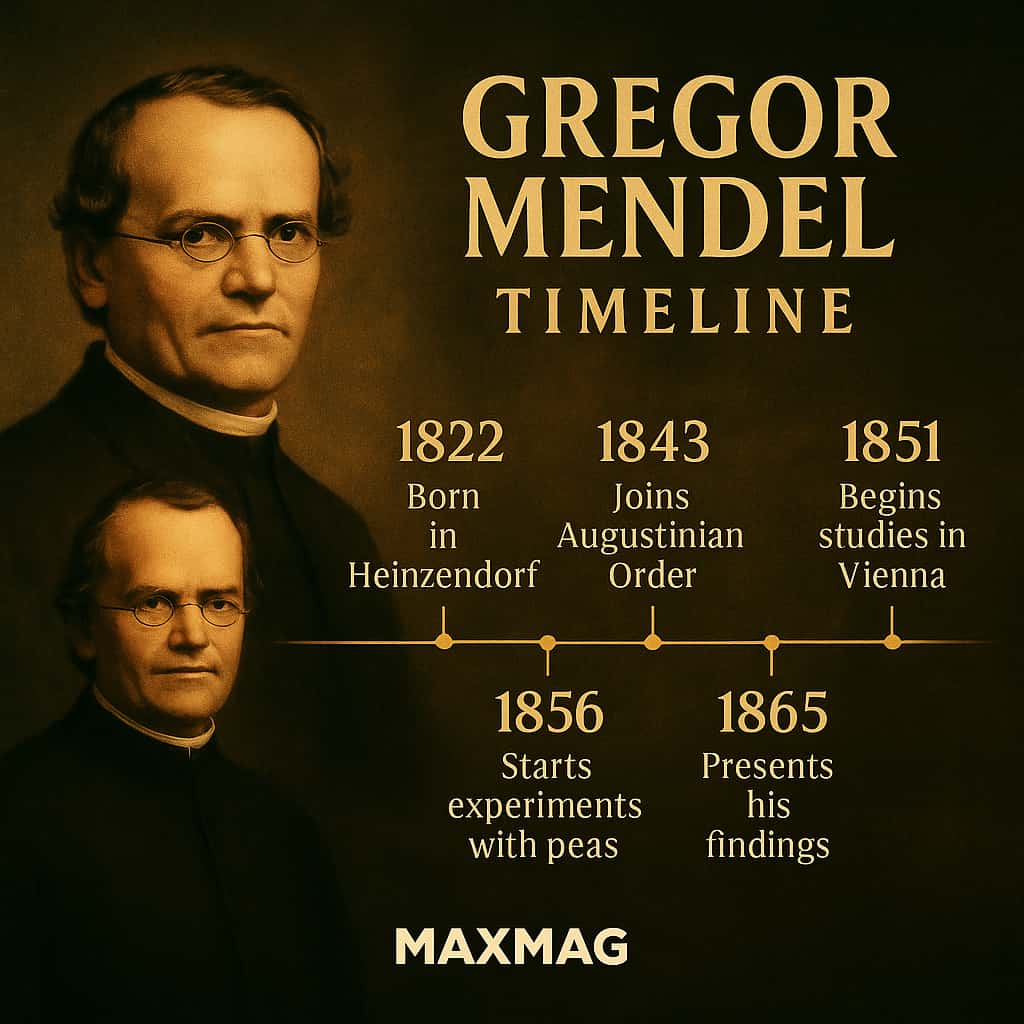
Key Works and Major Contributions of Gregor Mendel
The famous pea plant paper of 1866
The core of any Gregor Mendel biography is the 1866 paper “Versuche über Pflanzenhybriden” (“Experiments on Plant Hybridization”). In it, Mendel summarised years of work with thousands of pea plants, showing that traits do not simply blend but segregate in predictable ratios. When he crossed pure-breeding yellow-seeded peas with pure-breeding green-seeded peas, the first generation was all yellow. But when those plants were allowed to self-fertilise, the second generation split roughly three yellow to one green.
From patterns like these, Mendel inferred that each trait is controlled by “factors” that come in pairs—one from each parent. Today we call them genes and alleles. He concluded that these factors separate when germ cells (eggs and pollen) form, and then recombine at fertilisation. That simple idea, the law of segregation, later became a pillar of classical genetics.
His second major insight, the law of independent assortment, came from tracking two traits at once—say, seed colour and seed shape. Mendel found that the inheritance of one trait did not usually affect the inheritance of the other, leading him to propose that different factors are passed on independently. In real organisms there are exceptions, but as an approximation of how many genes behave, his rules were astonishingly powerful.
Mendelian genetics and the laws of inheritance
Modern readers often meet Mendel through neat Punnett squares in schoolbooks. Yet the real history of genetics is messier and more interesting. Mendel himself worked without the language of DNA, chromosomes or mutation. He was a 19th century science pioneer relying on careful observation, arithmetic and patience.
His laws of inheritance were initially treated as a niche contribution to the study of hybrid plants rather than a general theory of heredity. The paper was cited only a handful of times over the next three decades. It was not until around 1900—years after his death—that three botanists independently rediscovered similar patterns and realised that an obscure monk in Brno had already laid out the rules. By then, the Gregor Mendel biography had shifted posthumously from “local abbot” to “founder of genetics”.
If you want to see how educators now present his breakthroughs, a clear, classroom-friendly overview is offered by the Cold Spring Harbor Laboratory’s DNA Learning Center in their Mendel as the “Father of Genetics” biography, which walks through his pea plant experiments and the logic behind his conclusions.
Today, geneticists continue to revisit his original pea traits with modern tools. Researchers have used genome sequencing to identify the genes behind the seven classical pea characteristics that Mendel studied, tying his 19th century observations firmly to 21st century genomics.
As a section wrap-up, it is fair to say that the heart of any Gregor Mendel biography lies in these deceptively simple experiments—the work of a patient observer who turned garden plants into a window on inheritance.
Methods, Collaborations and Working Style
A meticulous note-taker in a monastery garden
Mendel’s working style was methodical, almost obsessive. He cultivated and tested tens of thousands of plants—around 28,000 peas by some estimates—carefully isolating flowers, recording traits and tallying offspring.
His notebooks, some of which survive only in fragments, reveal a man who believed that biology could be described with the same precision as physics. Seeds were counted, ratios were calculated, and deviations from the expected numbers were scrutinised. In a world where many naturalists still told stories about nature, Mendel quietly treated his pea plants as data.
For non-specialists trying to understand why he matters, it can help to picture his approach as closer to a modern clinical trial than to casual gardening. He set up controlled crosses, followed large numbers and used statistics—primitive by today’s standards, but recognisable—to decide whether his hypotheses held.
Quiet collaborations in Brno’s scientific circles
Although the Gregor Mendel biography often emphasises solitude, he was not working in complete isolation. The Brno Natural Science Society provided a forum where he could present his results and hear about others’ work. He corresponded with botanist Carl Nägeli, seeking support and advice, particularly when his experiments on hawkweed produced confusing results.
Mendel also interacted with a broader circle of 19th century science enthusiasts. He travelled to exhibitions, visited scientific sites in Paris and London, and kept up with new instruments and methods. The monastery was his base, but the world of ideas extended well beyond its walls.
This combination of quiet, local work and modest international contact is part of what gives the Gregor Mendel biography its bittersweet feel: he was close enough to the scientific mainstream to glimpse its debates, yet far enough from the centres of power that his greatest paper could be overlooked.
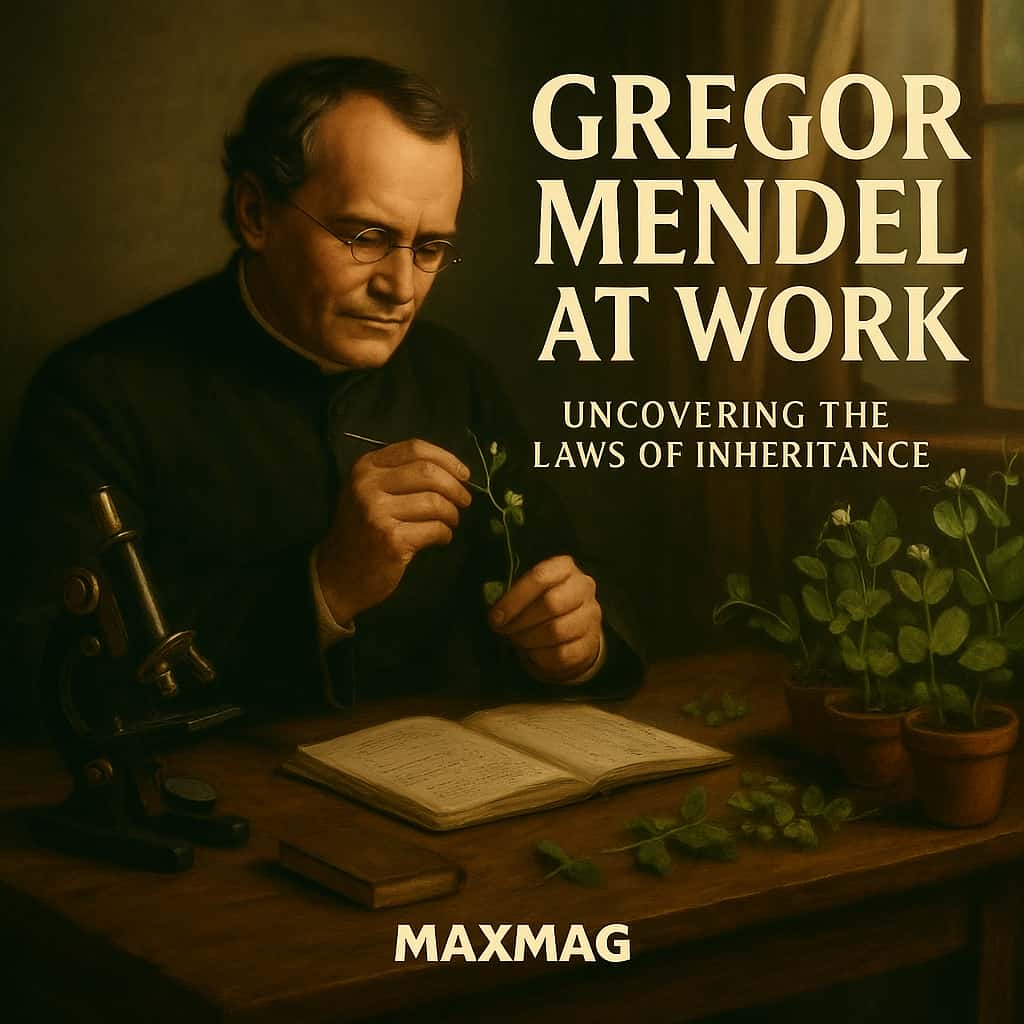
Controversies, Criticism and Misconceptions
Was Gregor Mendel’s data too perfect?
No serious Gregor Mendel biography can ignore the statistical controversy that surfaced in the 20th century. In 1936, the statistician Ronald Fisher re-analysed Mendel’s published results and concluded that the ratios came out suspiciously close to the neat fractions predicted by his theory. Fisher suggested that the data might have been unconsciously “smoothed”—perhaps by discarding some outliers or rounding counts to fit expectations.
Later scholars have debated Fisher’s conclusions. Some argue that Mendel’s data are indeed “too good to be true”; others point out that experimental conditions and selective reporting may explain the pattern without requiring deliberate fraud. The debate remains a curious footnote in the history of genetics, reminding us that even founding figures are not above scrutiny.
The myths that cling to every Gregor Mendel biography
Over time, a number of myths have crept into popular retellings. One common story claims that Charles Darwin read Mendel’s paper and failed to grasp its importance. In fact, there is no solid evidence that Darwin ever saw it. Their intellectual paths ran in parallel: Darwin tackling evolution and natural selection, Mendel tackling heredity. Only later would the two strands intertwine into the modern synthesis of evolutionary biology.
Another myth paints Mendel as a complete failure in his own life, unrecognised and isolated. Reality is more nuanced. He was respected in his community, eventually elected abbot of his monastery, and engaged with scientific societies. What he lacked was not esteem but the specific recognition that his experiments had quietly founded a new science.
Debunking these stories does not diminish him. On the contrary, it makes the Gregor Mendel biography more human: a tale of partial success, delayed fame and the complex ways scientific ideas move—or fail to move—through society.
Impact on Genetics and on Wider Society
From dusty proceedings to the foundation of modern genetics
After his death in 1884, Mendel’s paper sat largely unread in the proceedings of a local society. Its rediscovery around 1900 transformed that dusty volume into a cornerstone of genetics. Scientists eager to understand chromosomes, mutations and evolution now found in Mendel’s ratios a set of rules that made sense of their observations.
The impact rippled outward. Plant and animal breeders used Mendelian genetics to predict the outcome of crosses and to build new varieties with desired traits. Medical researchers began to recognise patterns of inheritance in human diseases, from haemophilia to certain forms of deafness. The basic idea that traits are controlled by discrete units that can be passed on—genes—became central to 20th century biology.
How Mendel’s ideas shape medicine and agriculture today
More than a century later, Mendel’s influence is everywhere. Modern discussions of DNA, gene editing and personalised medicine still rest on the logical scaffolding he built. Introductory resources that explain how traits are passed down often begin with his pea plants, as in a recent genetics explainer for general readers that walks through inheritance patterns before exploring more complex molecular biology.
In agriculture, breeders now combine Mendelian principles with genomic data to design crops that yield more, resist disease or cope better with climate stress. The peas that once occupied a monastery garden have become symbolic ancestors of the vast fields of maize, wheat and rice whose genetics we now manipulate with precision.
For non-experts, the key takeaway is simple: the Gregor Mendel biography is not just a chapter in the history of genetics; it is part of the story behind every blood test result that mentions a gene, every family that wonders about inherited risk, and every field planted with carefully bred seeds.
Personal Beliefs, Character and Private Life
The monk behind the microscope
Mendel’s identity as a monk is sometimes treated as a curiosity in a Gregor Mendel biography, but for him it was central. As an Augustinian friar and later abbot, he lived a life structured by prayer, communal duties and pastoral work. His scientific curiosity did not replace his faith; it coexisted with it.
Accounts from contemporaries describe him as reserved but approachable, devoted to his responsibilities and fond of discussion. He taught, administered the monastery’s estates and dealt with everyday problems, from finances to disputes among parishioners. Science occupied his free hours rather than defining his entire existence.
Hobbies, weather logs and a life beyond peas
One of the surprises for anyone reading beyond the basics of a Gregor Mendel biography is how many side interests he had. He was an active meteorologist, keeping daily weather records and helping to found the Austrian Meteorological Society. He even analysed a severe tornado that struck Brno in 1870, trying to understand its path and dynamics.
Mendel also kept bees in specially designed hives, experimented with other plants such as hawkweeds, and followed reports of aurora borealis and sunspot activity. These pursuits paint a picture of a man fascinated by patterns in nature, whether in the sky, the weather or the heredity of plants. His world was not narrow; it was densely packed with observations and questions.
These human details—the bee stings, the weather charts, the quiet evenings in the abbey garden—stop the Gregor Mendel biography from becoming a dry list of experiments. They remind us that the “father of genetics” was also a man who simply liked to watch the world closely.
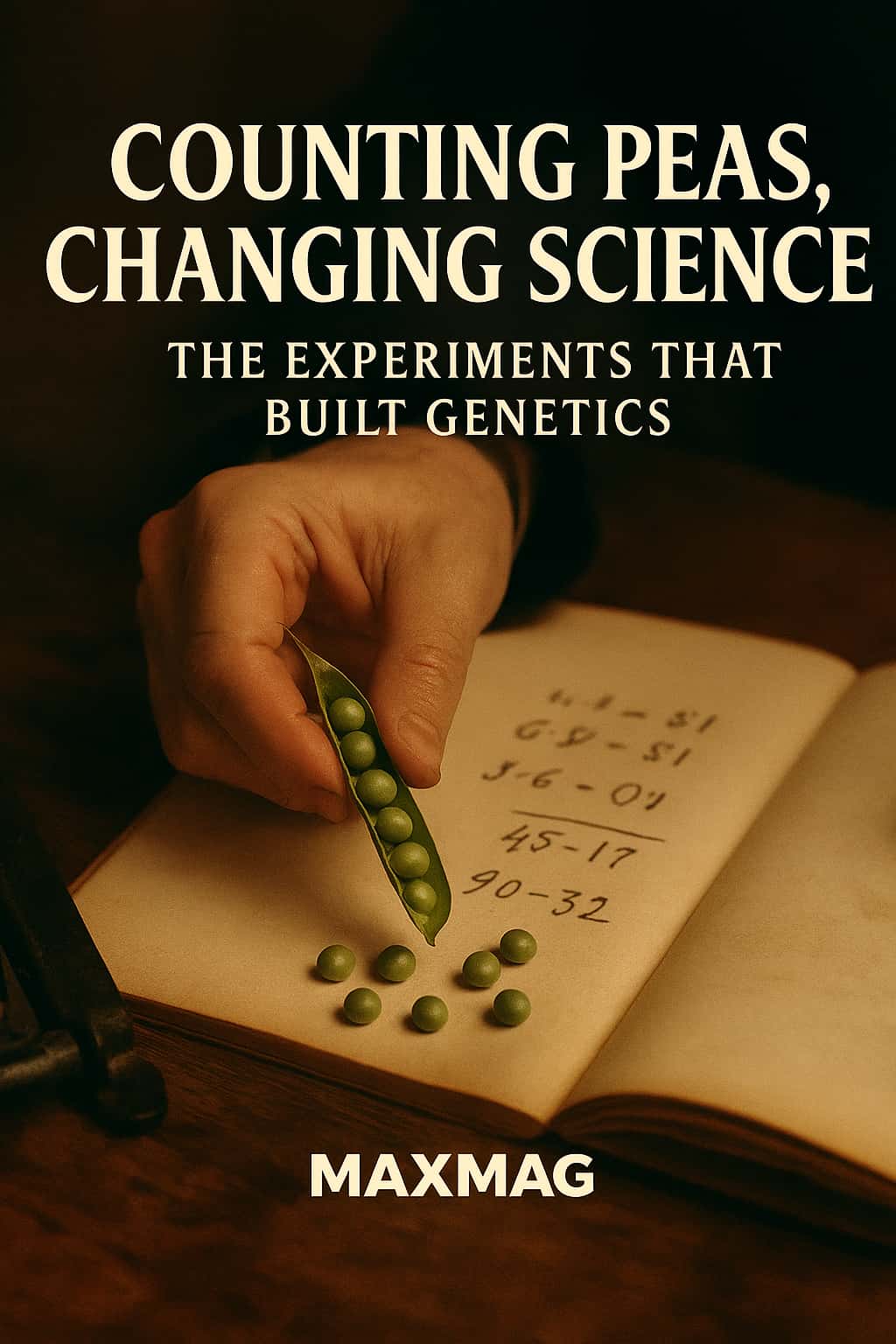
Later Years and Final Chapter of Gregor Mendel
An abbot weighed down by taxes and duties
In 1868, Mendel was elected abbot of St Thomas’s Abbey, a role that dramatically changed his daily life. Administrative responsibilities multiplied. He now had to manage finances, supervise monks, interact with civic authorities and defend the monastery’s interests in an era of growing tension between church and state.
One long-running dispute over special taxes imposed on religious institutions consumed much of his energy in his later years. As paperwork and legal battles mounted, the time and mental space available for experiments dwindled. The garden that had once been his laboratory now had to compete with ledgers and council meetings.
Death, forgotten papers and slow recognition
Mendel died in 1884, likely of chronic kidney disease, largely unknown outside his region. At his funeral, the composer Leoš Janáček reportedly played the organ. After his death, a succeeding abbot ordered many of his papers burned, perhaps hoping to close the chapter on the bitter tax dispute that had overshadowed his final years.
It is a melancholy image: the man whose laws of inheritance would define a new field, leaving behind records that went up in smoke. Yet his published paper survived, quietly waiting in library stacks for a new generation of scientists to realise what they had missed.
By the time the importance of his work was fully recognised in the early 20th century, the Gregor Mendel biography could only be reconstructed from scattered letters, recollections and that single, remarkable paper. In a sense, the delayed recognition became part of the legend—a reminder that science does not always reward its pioneers in their own lifetimes.
The Lasting Legacy at the Heart of Every Gregor Mendel biography
Why his story still speaks to today’s science
Why does the Gregor Mendel biography continue to fascinate readers in an age of genome sequencing and gene editing? Part of the appeal lies in the contrast between scale and setting. The rules that govern DNA in every living cell were first glimpsed in a small monastery garden, by a man working essentially alone with simple tools.
Another part lies in the way his life illuminates the history of genetics as a field. Mendel’s story shows that revolutionary ideas can emerge from unlikely places and that scientific truth can slumber in obscurity for decades before being recognised. His work also reminds us that even “simple” traits, like pea colour, stand at the entry point to a far more complex web of biological processes—a fact modern research on his pea genes continues to underline.
What the father of genetics can teach us about curiosity
There is another lesson at the heart of the Gregor Mendel biography: the value of stubborn, careful curiosity. Mendel did not start with a grand theory. He started with a question—how traits are passed on—and a practical system for testing ideas. He failed exams, met confusion in his hawkweed experiments and saw his main paper largely ignored. Yet he kept counting, refining and thinking.
In today’s debates about genetic testing, personalised medicine and the ethics of editing genomes, Mendel’s name is often invoked as a starting point. Understanding his life and work does more than satisfy historical interest. It reminds us that behind the abstract term “inheritance” stands a careful observer willing to watch generation after generation unfold.
Ultimately, what makes the Gregor Mendel biography so compelling is not only that he founded genetics, but that he did so in a way that feels accessible. His story suggests that deep insights can grow from small, patient acts—planting seeds, counting pods, asking simple questions with unusual persistence.
In that sense, to understand modern genetics is to understand the Gregor Mendel biography: a narrative of overlooked work, rediscovered ideas and the enduring power of careful observation to change how we see life itself.
Frequently Asked Questions about Gregor Mendel biography
Q1: Who was Gregor Mendel and why is he called the father of genetics?
Q2: What did Gregor Mendel discover in his pea plant experiments?
Q3: Why was Gregor Mendel’s work ignored during his lifetime?
Q4: Did Gregor Mendel ever meet or influence Charles Darwin?
Q5: Are Mendel’s laws still valid in modern genetics?
Q6: What can we learn from the Gregor Mendel biography beyond science?

